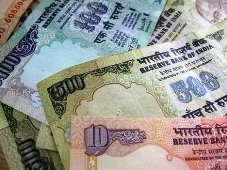 In the first week of February, L&T Finance launced their issue to raise Rs 500 crore (Rs 5 billion).
In the first week of February, L&T Finance launced their issue to raise Rs 500 crore (Rs 5 billion).
These instruments usually provide a slightly higher return for investors than the prevailing interest rate on fixed deposits because most investors in their search for returns restrict their attention to only the interest rate.
There is the benefit of an additional feature on these instruments and this needs to be taken into consideration.
Listing
There is an additional feature in most NCD issues -- listing on the stock exchanges. Since this is a debt instrument, there is a different way in which the price movement will be visible and hence ,this needs a completely different way of evaluation.
Most people are familiar with stock exchanges and equities, where demand and supply can send prices zooming either up or down.
The situation is different for the NCD, where specific factors impact the prices and there is a restrictive way in which they move.
The listing feature enables new investors to buy these debentures, while existing investors can sell their holdings on the exchange.
Overall price position
The starting point for looking at the price movements of this instrument is the face value.
This is the base price the investor will receive at the time of maturity of the instrument, so the prevailing market price or traded price has to be seen in relation to the face value.
The next point is the interest rate paid on the instrument. This figure by itself has no implication but when seen in conjunction with the prevailing interest rate, it shows up on the impact on the market price.
For example, if the interest rate on the instrument is, say, 10 per cent, while the prevailing interest rate in the market has gone down to 7 per cent, and there are three years to maturity, then the price of the instrument will be quoting above theface value.
In case the situation is reversed, where the prevailing rate has risen above that paid by the instrument, then the price at which this is traded would be below the face value.
This happens so that there is a specific yield or rate or return to the investor when they invest in the instrument at a particular date and then hold it till maturity.
Gaining from price position
The manner in which an investor wants to earn returns will determine how theyconsider the instrument.
Those who want to buy just for earning returns through interest need to consider the ratio of the interest earned divided by the price paid, to know the return.
Further, the price paid has to be compared to the face value to see the impact on the net return.
So, for example, an instrument of Rs 1,000 face value (maturing in a year) bought at Rs 950 and paying an interest rate of 9.5 per cent will yield 10 per cent each year, plus an additional return (5.26 per cent) due to the premium on cost price at maturity.
There can be a situation where the maturity will result in a reduction of the net return, as the investor has paid more than the face value.
Other savvy investors might want to earn returns from the price changes through buying and selling the instrument. In this case, they should consider buying when the prevailing interest rates in the market are high and sell when the rates fall.
In such a situation, there will be a price change due to the interest rate movements that will favourably impact the returns.
Interest payment
The other point the investor has to worry about in listed NCDs is the date on which the interest is paid. This can be annually or semi-annually and it depends on the manner the issue is structured.
This date is important because of the price movement that will be associated with the event. For every interest payment, the entity that has issued the NCD will announce a record date.
This date is nothing but the fact that the holders of the instrument on this particular day will be eligible for the interest.
When the instrument is traded before the record date, the price will cover the interest payment, too.
Once the date for calculation of the interest passes, then the price will correct for the interest the new investors will not be eligible for.
Investors need to understand this and then decide.
Often, they seem to forget this and end with a double calculation, wherein they think the instrument is available at a lower cost and on top of that, they will also get the interest.
If the interest rate is substantial, then the change in the price can also be high and knowing the real situation can be helpful in making the right decision.
The writer is a certified financial analyst






